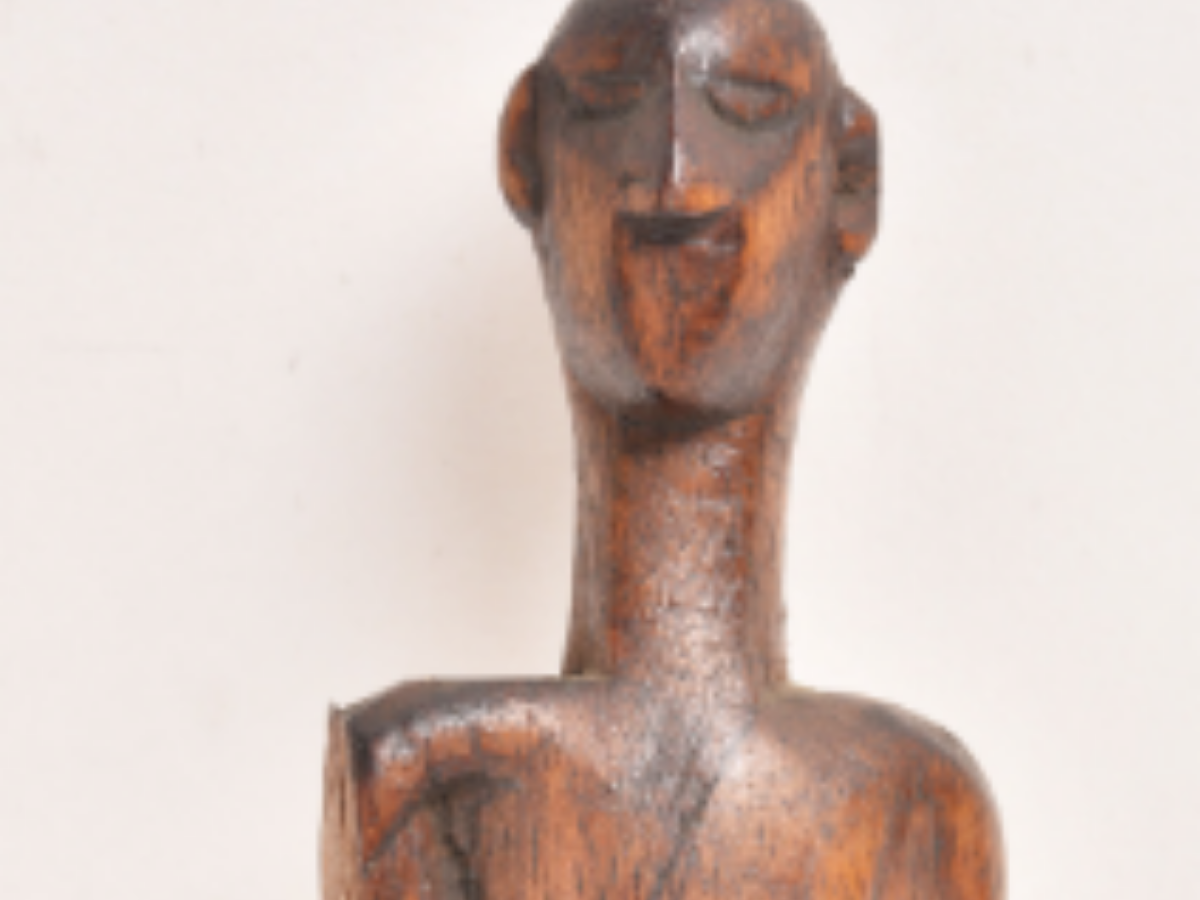State
Tribe Name
Art Type
short description
Another brightly colored work of art that shows the immense cultural heritage surrounding the Santhal tribe from India is naturally standing wooden sculpture. The Santhals are known for their craft-based distinction, found in the states of Jharkhand, Bihar, West Bengal, and Odisha. Their tendencies towards sculpturing in wood are symbolical or ritualistic in nature. The particular sculpture carved in wood is a representation of a standing human figure. The carving technique used is according to tradition, representing the deep relationship of the Santhal tribe with nature and the ancients' heritage passed down from generation to generation.
Thumbnail

Filter Postion
Left
Filter Background
Off
Theme
Filter Header Image

content
Image

description
Another brightly colored work of art that shows the immense cultural heritage surrounding the Santhal tribe from India is naturally standing wooden sculpture. The Santhals are known for their craft-based distinction, found in the states of Jharkhand, Bihar, West Bengal, and Odisha. Their tendencies towards sculpturing in wood are symbolical or ritualistic in nature. The particular sculpture carved in wood is a representation of a standing human figure. The carving technique used is according to tradition, representing the deep relationship of the Santhal tribe with nature and the ancients' heritage passed down from generation to generation.
The sculptures are representative of the tribal belief, such as spiritual figures, deities, ancestors, and revered ancestors. Such sculptures are usually mounted in residential or community settings as protectors or symbols of bounty and blessings.The standing wooden sculpture is not with clean lines and stylized features, but usually reflects the tribe's emphasis on proportion and form, sometimes depicting tribal attire and facial features that are highly detailed around the clothing, hair, or accessories. Aside from being an artwork, these sculptures also hold symbolic meanings that connect the physical and spiritual worlds and show the tribe's veneration for their ancestors. The Santhal tribe carve these sculptures in the same traditional way, but now they tend to do so with a few modifications or changes suiting the present-day context. Through such works, the tribe has forged resilience to keep its traditions alive and has been contributing to the rich artistic traditions of India.
The sculptures are representative of the tribal belief, such as spiritual figures, deities, ancestors, and revered ancestors. Such sculptures are usually mounted in residential or community settings as protectors or symbols of bounty and blessings.The standing wooden sculpture is not with clean lines and stylized features, but usually reflects the tribe's emphasis on proportion and form, sometimes depicting tribal attire and facial features that are highly detailed around the clothing, hair, or accessories. Aside from being an artwork, these sculptures also hold symbolic meanings that connect the physical and spiritual worlds and show the tribe's veneration for their ancestors. The Santhal tribe carve these sculptures in the same traditional way, but now they tend to do so with a few modifications or changes suiting the present-day context. Through such works, the tribe has forged resilience to keep its traditions alive and has been contributing to the rich artistic traditions of India.
Image Mode
landscape
promoted
On
Verified
Off
